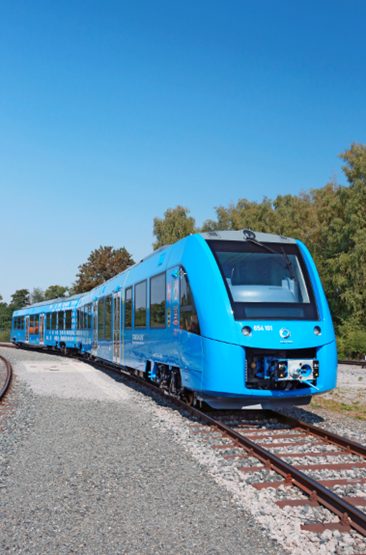 Read the peer reviews for this feature
Read the peer reviews for this feature
Converting a railway to electric operation demands considerable capital investment. Erecting masts and wires, arranging supply points and replacing rolling stock all need money.
Project planners need to carefully assess which tracks need wires above and which do not. A railway with
bi-directional tracks will need crossovers wired, whereas one that only uses crossovers for engineering trains will not, for example.
Thoughts are now turning to leaving sections of running lines without wires. This could save money, particularly where there is little space for overhead line equipment, such as under bridges and through tunnels. The key to this is reliably moving the electric train from one side of the gap to the other.
Trains can coast, as Virgin Trains East Coast occasionally demonstrates when problems force Network Rail to isolate current from overhead wires. Any coasting driver will be hoping he does not need to brake and stop, because the train will then be marooned. Given favourable gradients and signals, a train can coast for several miles.
Longer gaps can be bridged by providing secondary power supplies on a train. This might be a diesel engine (as in Hitachi’s bi-mode trains that are about to enter service), batteries (as tested a couple of years ago by NR in East Anglia), flywheel energy storage or hydrogen power.
However, unless those secondary sources can supply the same power as a train’s primary electrical system, performance will be worse. Top speed might be lower or acceleration more tardy, leading to longer journey times when compared with electric operation. Even so, an end-to-end journey might still be quicker using a mix of power supplies than it is today on diesel alone.
Cost is the driving force behind consideration of partial, or discontinuous, electrification. This cost is not so much in erecting masts and wires, as in altering structures to provide sufficient space around those wires to satisfy electrical clearance rules.
Britain traditionally used 2.75 metres as its clearance distance, but latest European rules demand 3.5 metres. Imagine a station that sits by a tunnel - or worse, between two tunnels. Without rebuilding the tunnels, the OLE might stand closer than 3.5 metres to platform tops. Although the rules permit clearances under 3.5 metres, Network Rail would need to provide a risk assessment to justify any derogation.
To date, standards body RSSB has received no application from NR for derogations. Instead, the network owner has opted for expensive rebuilding work which, in turn, led Government to postpone or cancel electrification work in the face of rocketing costs.
Return to our imaginary station sitting between its tunnels, and discontinuous electrification would remove the overhead wire from the platform line. There may just be a gap or an isolated and earthed wire.
If there’s a gap, then the train will need to have a pantograph that doesn’t extend to its full height when it leaves its contact wire, but remains at a suitable height to regain contact with the OLE after the platform. Using an earthed cable allows the pan to continue running as normal, but designers will need to consider the possibility of the earthed cable becoming live as the train bridges both live and earthed OLE.
Batteries could provide the power to restart the train and see it back under the wires. Those batteries could have been charged from regenerative brakes as the train slowed to a stop.
This concept could be extended to the complicated trackwork approaching a major station and into the station itself, to save the cost of erecting equally complicated wiring. Trains moving in and around the station would run on secondary power before regaining their OLE.
This might make the OLE cheaper, but it adds costs elsewhere. Any electric train running through the station would need to have a secondary power source - standard EMUs would not be permitted. NR and Government would save money, but train operators would face higher costs which might cut premium payments to Government or increase the subsidy it needed to provide.
Such decisions demand detailed analysis. And this analysis should extend to considering what secondary sources trains use, because passengers will be unimpressed if trains run on diesel in stations.
Hydrogen is an alternative. Used in a fuel cell, it directly generates electricity with water as its only emission. It has been the subject of considerable research from the University of Birmingham - Senior Lecturer Stuart Hillmansen tells RailReview that the university built a narrow-gauge locomotive powered by hydrogen five years ago. It took part in the Institution of Mechanical Engineers’ railway challenge in 2012 and acquitted itself well. Since then, Alstom has built a full-size hydrogen multiple unit which is now on test in Germany.
Hillmansen argues that hydrogen is safer than diesel as a fuel - it might burn, but it doesn’t set other things alight because it’s not highly radiative. He reckons that its power density is similar to diesel engines, but range is harder to achieve with a train able to carry a day’s worth of fuel whereas diesels generally carry two.
Hydrogen is secondary energy because, like electricity, it is produced from something else. And that something else is very common. Water contains hydrogen, as do classic hydrocarbon fuels such as natural gas, petroleum or coal. Sewage sludge can also be used.
Producing hydrogen from hydrocarbon fuels gives carbon dioxide as a by-product, which makes hydrogen use not free from carbon emissions. Using electrolysis consumes electricity to split hydrogen from the oxygen it’s bonded to in water (the reverse of the fuel cell process). If the electricity comes from renewable sources, then the hydrogen can be claimed to be low-emission.
With suitable storage, a rail depot may be able to produce hydrogen by electrolysis using cheap, off-peak electricity. Alternatively, a small steam methane reforming (SMR) plant could take a supply of natural gas to produce hydrogen on site.











